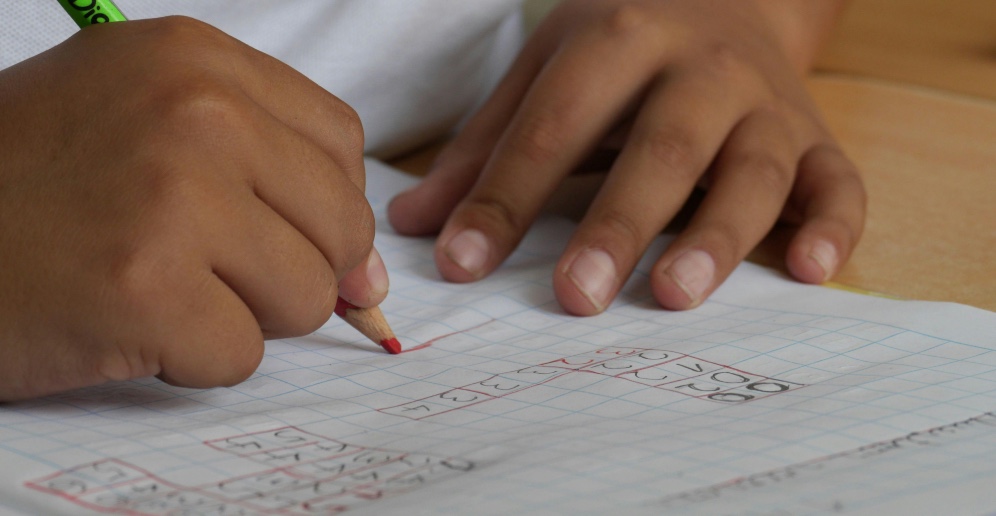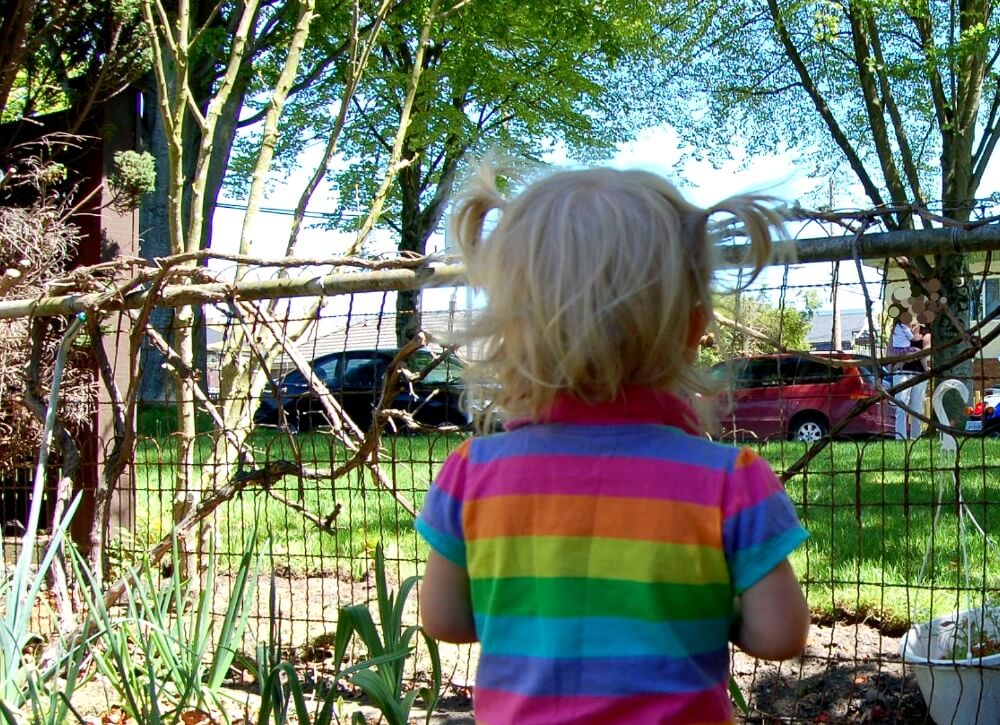In British Columbia’s elementary schools, multi-grade or “blended” classes (where students from different grade levels learn together) have become more prevalent in the post-COVID period. Educators report that shifting enrolment patterns and funding pressures after the pandemic have led schools to organise more combined-grade classes than before www2.gov.bc.ca.
The increase in split classes is largely driven by structural factors – notably the class size and composition rules in the teachers’ collective agreement, the way staffing is allocated to schools, and cost-saving measures adopted by districts amid budget constraints. Below is a overview of these factors and how they contribute to the trend.
BCTF class composition language and its effects
The British Columbia Teachers’ Federation (BCTF) collective agreement (restored in 2017 after a Supreme Court decision) imposes specific limits on class size and composition. For example, kindergarten classes are capped around 20 students and grades 1–3 at 22, with slightly higher caps for older grades and for certain split-grade classes sd44.ca sd44.ca.
Perhaps more crucial is the composition language: “No more than three (3) students with special needs shall be integrated into a single regular classroom”, with at most one of those being a high-needs (low incidence) case sd44.ca.
This means if a given grade cohort has a high number of students with identified special needs, they cannot all be placed in one class without violating the contract. In practice, administrators must distribute students (and especially those with learning support designations) across multiple classrooms to meet these limits.
This often results in multi-grade splits – combining part of one grade with another – as a way to stay within the mandated composition thresholds while efficiently using available teachers vsb.bc.ca.
In short, the BCTF’s class size/composition rules (intended to ensure manageable class loads and support for all learners) have the side effect of influencing class configurations. When a single grade’s enrolment exceeds the size cap or its composition of students with special needs is above the allowable number, schools typically form an extra class or a split-grade class to comply vsb.bc.ca.
Thus, the enforcement of these quality standards can increase the number of blended classes, especially in smaller schools or uneven cohorts, by necessitating additional class groupings.
Staffing entitlements and teacher allocation
Staffing entitlements – the formulae by which teachers are allocated to schools – also play a key role in the rise of multi-grade classes. Under the restored contract language, districts must meet certain teacher–student ratios not only for classroom teachers but also for specialist staff.
For instance, there are minimum ratios for teacher-librarians, counsellors, learning support, and English-language learning teachers that each district must provide based on student population sd44.ca. While these guarantees benefit students, they also mean a portion of a school’s staffing is designated to non-enrolling roles, leaving a fixed number of classroom teachers to cover all classes.
Each school’s allocation of classroom teachers is based on total enrolment and the class size limits (often funded through a provincial “Classroom Enhancement Fund”). Principals, in consultation with staff committees, then have to organise students into that number of divisions, balancing the educational needs with the staffing provided and the class size rules vsb.bc.ca.
If the number of students at a single grade doesn’t perfectly align with what one full class can hold, the solution is frequently to create a split class. For example, a small surplus of students in one grade – not enough to form a entire second class but too many to fit into one class under the cap – will be combined with students from an adjacent grade to form a viable class size.
According to the Vancouver School Board, schools must “place the students in their classes with teachers” using the staff allocated, all while respecting “legislated contractual considerations,” and “in many instances, combined classes result.” vsb.bc.ca
In rural and smaller districts, this has long been common practice; when enrolment declines or is spread thinly across grades, multi-grade classrooms become necessary to use teachers efficiently www2.gov.bc.ca. In one district example, falling student numbers meant the board was “forced to maximise class sizes,” which went hand-in-hand with laying off excess teachers and consolidating students into combined classes in order to use fewer teachers overall vancouverislandfreedaily.com.
In summary, the way staffing entitlements are calculated and distributed often leaves schools with cohort sizes that don’t neatly match class size limits, and blending grades is a practical way to ensure each teacher’s class is filled within the allowable limit. This ensures the school stays within its staffing allocation while adhering to contract rules.
Budget pressures and cost-saving measures by districts
Post-COVID financial pressures in public education have further propelled the use of multi-grade classes as a cost-saving strategy. School districts in B.C. are required by law to balance their budgets annually, and many have faced significant shortfalls in the past couple of years.
One-time COVID relief funding has expired, and rising inflation and costs (including salaries and support services) have not been fully matched by increases in provincial funding thetyee.ca thetyee.ca.
As a result, numerous districts have had to cut expenditures – in 2025, for example, Surrey had to address a $16 million shortfall and Burnaby about $4.2 million, alongside cuts in many other districts; it has become “more difficult to find a district that was not forced to make cuts” than one that was vancouverislandfreedaily.com.
Since the bulk of a district’s operating budget goes to salaries, reducing staff is one of the few ways to cut costs. Districts have therefore looked to consolidate classes (thereby requiring fewer teachers).
By filling classes closer to the maximum sizes allowed under the contract, and by merging small grade cohorts together, boards can eliminate some teaching positions as a budget measure vancouverislandfreedaily.com. Each merged or split class means one less separate classroom and one less teacher needed than if those grades were taught apart.
Community and trustee discussions during budget consultations explicitly acknowledge this dynamic – for instance, Saanich School District noted public feedback suggesting they “reduce multi-grade classes if it will reduce cost,” reflecting a perception that combined classes might help stretch limited funding saanichschools.ca.
In practice, this can translate to schools opting not to run an additional small class (which would require hiring another teacher) and instead placing those students into existing classes of another grade level. While this saves money, it is essentially a balancing act: districts must still respect the class size and composition limits when combining classes, or else provide remedy (extra support or pay) to the affected teachers. Many districts prefer reorganising classes over paying contractual overload penalties, especially in tight budget times.
Blended classes (combining two grade levels in one room) have long been a reality in rural schools and are now increasingly common across B.C. elementary schools. Post-pandemic fiscal pressures and staffing constraints have pushed schools to maximise class sizes, often by creating split-grade divisions, in order to operate within budget and contract limits vsb.bc.ca vancouverislandfreedaily.com. Teachers in combined classes must cover two curricula and manage a wider range of ages and abilities, a challenge that is offset by maintaining class sizes within the negotiated caps and distributing students with special needs to meet composition requirements.
Remedies, blended classrooms, and the hidden costs of austerity in BC schools
The collective agreement between the BC Teachers’ Federation (BCTF) and the provincial government was explicitly designed to protect learning conditions through enforceable limits on class size and composition. When those limits are exceeded, the agreement mandates the use of remedies—not as symbolic gestures, but as real, restorative measures to uphold the quality of education. These remedies are meant to restore capacity and make it possible for teachers to do the work they are trained to do.
Remedies were negotiated as part of the restored 2002 contract language, which had been unlawfully stripped by the BC government and was later reinstated by the Supreme Court of Canada in 2016. This restored language includes:
- Class size maximums
- Composition limits (e.g., no more than three students with an IEP per class unless otherwise agreed)
If a district cannot comply with these limits, they must negotiate remedies directly with the affected teacher. Remedies may include:
- Additional preparation time
- Extra Educational Assistant (EA) support
- Specialist teacher time (e.g., resource or behaviour support)
- Reduced supervision duties
- Other compensations negotiated locally
In practice, however, districts often treat these remedies as a financial penalty to be minimised, rather than a critical support mechanism for both students and educators. This has led to a range of avoidance behaviours:
- Reorganising class groups or shuffling students to avoid triggering remedies, even if it separates close friends or places students in inappropriate settings
- Eroding the intent of the agreement by offering remedies that provide no meaningful relief—such as prep time months after the period of overage
The remedy system was designed to protect inclusion and uphold quality learning conditions. When it is ignored, deferred, or reduced to token gestures, the most vulnerable students bear the cost.
How blended classrooms reflect and reproduce austerity
Post-COVID, BC districts have increasingly relied on blended or multi-grade classrooms at the elementary level. Though mixed-age learning can offer real developmental benefits, its recent expansion has far more to do with staffing entitlements and budget logic than pedagogical design. Blended classes allow districts to reduce the number of divisions and avoid triggering staffing obligations under the BCTF agreement.
For students with disabilities, this has introduced a host of indirect harms:
Separation of neurodivergent students to avoid composition limits
Because the BCTF contract limits the number of students with special needs per class, districts often split up neurodivergent students to avoid exceeding thresholds. Even when those students are friends, co-regulators, or mutually supportive peers, they are separated. This is framed as developmental growth—exposing students to new friendships—but it functions as enforced disconnection, often against the family’s or child’s express wishes. It also sabotages the connections of friends who may have diagnoses that already make forming connections difficult.
Use of blended classes to reduce staffing
Districts may avoid forming a full Grade 7 cohort because it would require an additional staff member. Instead, they split the grade across multiple 5/6/7 classes, each with fewer students, to remain within contract limits. Neurodivergent students who mask, fawn, or provide relational labour—often girls—often are used to smooth over behavioural gaps among younger peers, effectively replacing professional support with peer-based unpaid care. When older kids struggle in such a group, especially with sensory issues related to younger children, their struggle is often seen as an insensitivity towards younger children.
Reframing harm as growth
When these organisational decisions cause distress—removal from a safe teacher, a trusted friend, or a consistent environment—schools often reframe the experience as a growth opportunity. Children are told they are building resilience or being given a chance to lead, while the actual source of their harm (cost-cutting decisions) remains unspoken.
Lack of rights to continuity or relational stability
There is no enforceable right in BC to classroom stability, social continuity, or proximity to peers. Even when such continuity is listed in an IEP, administrators may override it for composition reasons. For children with disabilities, who often rely on consistent relationships to regulate and thrive, this creates constant precarity.

Broader systemic effects of maxed-out classrooms
Before diving into the specific effects of maxed-out classrooms, it is important to acknowledge that these are not isolated problems—they reflect the cumulative impact of policy, funding, staffing, and structural design. Each consequence described below stems from decisions made far upstream, yet it is children, families, and frontline educators who bear the cost.
No room for de-escalation, nuance, or repair
In classrooms where every minute is allocated, every adult is multitasking, and every interaction is triaged, there is no spaciousness for relational care. Teachers are left without the bandwidth to pause and consider why a child is struggling, what unmet needs may lie beneath the behaviour, or how to support repair after rupture.
De-escalation becomes a luxury, and children whose nervous systems require gentleness, slowness, or individualised attention are instead swept into a cycle of correction and consequence. The system treats symptoms instead of attending to root causes.
Support becomes unstable and contingent
Even children with IEPs, designations, or clearly documented needs experience support as a moving target. One day, there may be an Educational Assistant available to help with transitions or emotional regulation.
The next day, that EA may be reassigned to a more acute crisis, or absent without replacement. Staffing shortages, illness, and rigid scheduling mean that support is only real if it exists in the moment—and for many students, the result is unpredictability, heightened anxiety, and a learned sense that help is fleeting or unreliable. Over time, this fosters internalised helplessness.
Accommodations are framed as burdens
In underfunded schools, even minor accommodations—like offering a quiet space to work, providing written instructions, or allowing movement breaks—are framed as extra work or unreasonable demands. Rather than being understood as legal and educational rights, these supports are seen as special favours, contingent on goodwill or capacity.
Families are left to carry the weight, often rearranging their work schedules, seeking private services, or managing the emotional fallout at home while school reports that the child is doing “fine.”
Placement decisions are bureaucratic, not developmental
Rather than placing children based on developmental readiness, learning style, or social-emotional compatibility, schools are forced to make classroom assignments based on headcounts, composition limits, and staffing entitlements.
This administrative approach fractures existing relationships, isolates children who require peer-based co-regulation, and ignores the wisdom of teachers and parents who understand the child’s ecosystem of safety and learning. It turns education into a numbers game, not a human endeavour.
Punishment enforces scarcity
When the system lacks capacity to accommodate, it leans on discipline to control. Children who act out due to sensory overload, trauma, or unmet needs are labeled disruptive and removed. This allows the institution to maintain the appearance of order while obscuring its failure to provide appropriate supports. The result is a moral inversion: children are punished not for wrongdoing, but for revealing the system’s limits through their distress.
Teacher burnout becomes inevitable
Educators enter the profession with empathy, expertise, and a desire to connect—but when they are consistently over-ratioed, under-resourced, and expected to manage complex needs without backup, even the most dedicated teachers begin to falter. Emotional exhaustion sets in. Rigid boundaries replace curiosity. Compassion becomes compartmentalized for survival. In such conditions, joy disappears from the classroom, and both students and teachers begin to disengage.
Quiet is rewarded; expression is punished
In a maxed-out system, compliance is the currency of success. Children who sit quietly, suppress their needs, and do not interrupt are celebrated, while those who speak up, question rules, or show emotion are labelled difficult. Masking becomes a survival strategy—especially for neurodivergent children, girls, and racialised students—who learn that their inclusion depends on invisibility. Boundaries are recoded as rudeness. Emotional expression is pathologized. The message is clear: assimilate or be excluded.
Children absorb the system’s failure as their own
Perhaps the most haunting consequence is the psychological toll. Children internalise the message that their needs are too much, their differences unwelcome, and their struggles shameful. They conclude that if they were just more normal, more obedient, more quiet, they would succeed. This misplaced blame calcifies into identity. They carry the weight of institutional scarcity as personal inadequacy—long after the school bell rings.
Who’s holding the classroom together?
When I asked Jeannie’s principal about the move toward more blended-grade classrooms, she offered a familiar refrain: that children thrive in mixed-age groupings. Citing educational research and the social benefits of peer modelling, the explanation framed the change as a pedagogical advancement—something child-centred, evidence-informed, and inherently positive.
But what remains largely unexamined in this narrative is the question of how and at whose expense this so-called thriving is made possible. Research rarely captures the informal redistribution of labour that underpins these arrangements—the invisible tasks of emotional regulation, peer support, and behavioural modelling that are quietly assigned to children perceived as stable, empathic, or mature.
In practice, this often means that girls—especially neurodivergent girls who mask well, who are fluent in emotional code-switching, who have been socialised into care—are positioned as the glue that holds the classroom together. Their success is not measured by what they learn, but by what they prevent: conflict, escalation, disruption. In blended classrooms, where adult support is stretched thin and staff avoid triggering contractual remedies, these children are deployed as unofficial aides—stabilising the group, interpreting instructions, redirecting younger peers—while their own developmental, sensory, and intellectual needs are deferred. Their labour is not named as labour. It is praised as kindness.
This echoes what Leah Lakshmi Piepzna-Samarasinha describes as the systemic co-optation of care labour from those least able to refuse it—a kind of emotional extraction masked as virtue.
And for disabled students, the pressure to perform this unpaid work is compounded by the threat of removal. Those who are not deemed helpful enough, regulated enough, or adaptable enough may be separated, reshuffled, or excluded entirely—under the pretext of class composition limits or learning diversity. Schools do not say “we had to move you to avoid a staffing penalty.” They say, “you’ll benefit from new friendships,” “this is an opportunity to grow,” or “you’re a leader now.” But the subtext is clear: some children are useful to the system because they make it easier to run, while others are displaced to preserve its appearance of compliance.
In this way, the pedagogical rhetoric of blended classrooms functions as a cover for austerity logic. The success of the model—where it exists—is not inherent to the age-mixing itself, but to the emotional and behavioural infrastructure provided by children who are never acknowledged as its architects. Their effort is unrecorded. Their boundaries are optional. Their distress, when it emerges, is pathologised rather than understood as the inevitable result of coercive relational labour.
-
How schools weaponise growth against disabled students
In the architecture of public education, few concepts are more universally praised—or more fatally misunderstood—than independence. Cloaked in progressive language about agency, resilience, and growth, the independence mandate is often wielded less as a vision for liberation than as a strategy of withdrawal.…
Conclusion: the logic of austerity, dressed in the language of pedagogy
The post-COVID uptick in multi-grade classrooms in British Columbia is not a neutral or purely pedagogical evolution—it is a material outcome of layered policy decisions. The BCTF’s restored contract language on class size and composition, re-established by the Supreme Court, was designed to ensure quality learning conditions, and the associated remedy system was intended to maintain them when those conditions are exceeded.
However, with school boards facing rising needs and stagnant or declining budgets, those same clauses are now interpreted through the lens of financial cost. Staffing entitlements provide each school with a fixed number of teachers based on enrolment, and that formula incentivises blended classes when grade-level enrolment is uneven. Instead of hiring additional teachers or creating full-grade cohorts, administrators increasingly opt for split-grade divisions that allow more students to be taught by fewer staff.
These organisational choices are presented in the language of developmental benefit—emphasising student leadership, mentorship, and social-emotional growth—but they are driven by administrative logic and economic constraint. The consequences are disproportionately borne by students with disabilities, whose needs often clash with the rigid efficiency of a maxed-out system.
This is how structural austerity works: through rules that appear neutral, staffing formulas that appear fair, and school decisions that appear educational. But beneath that veneer, the lived experience of disabled students tells a different story—one of fragmentation, invisibility, and adaptation without end. The integrity of the public education system depends not just on how it is funded, but on whether its structures are capable of telling the truth about what children lose when scarcity becomes the organising principle. This includes the quiet abandonment of remedies, the rationing of support disguised as growth, and the erosion of dignity masked as resilience.
-
Engineered famine in public education
In British Columbia schools today, we are not facing a behaviour crisis—we are facing a famine of care. This essay weaves together personal memory, systemic critique, and deep empathy for teachers and families alike to ask why our schools are starving the very…









